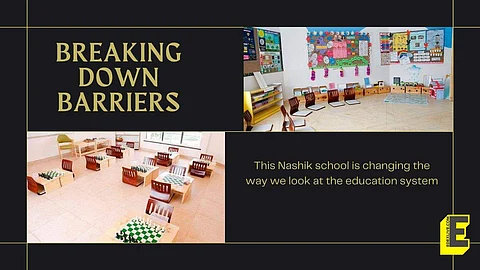This school in Nashik has constructed a unique library inspired by Kuroyanagi's Totto-Chan
With a view to break down barriers, a school in Nashik in Maharashtra is holding classes under the tree. There is also no strict rule to wear a uniform. Besides, they are running a library in a train to induce special learning in children during their formative years. Love theimagery? Well, so do we. Sachin Joshi, Principal of Espalier Heritage School in Nashik told ANI that the vision behind the school is to break the stereotype. "This school is constructed in such a way that children will themselves want to come to school. The unique train library was inspired by Tetsuko Kuroyanagi's memoir Totto-Chan, the Little Girl at the Window," explained the Principal. He added, "Totto-Chan is a very beautifully written book, where the schools were on the train in Japan. We obviously could not execute the idea but based on that we have made a very unique train library."
Highlighting the versatility and why they don't restrict children, Joshi elaborated on the rules and types of learning modes the school offers. Joshi said, "Our curriculum includes outdoor classrooms beneath the trees, no uniform for students among other things. We have farms where children indulge in farming. We also have a science park which is constructed in a way to induce practical learning. Moreover, we put special emphasis on drama and education. We have amphitheatres, in-house record studio and have converted over 70 per cent of the syllabus to music."
Besides this, children sit on the floor instead of desks and benches. "We believe uniforms, in a way, restrict and limits children's abilities, therefore there are no uniforms in the school. We also don't believe in punishing children, instead, we tell them to cycle for 30 minutes, which in turn generates electricity," he said. Joshi further said that the curriculum is constructed in such a way that after almost every fifteen minutes children can have entertainment breaks and enjoy extracurricular activities.


